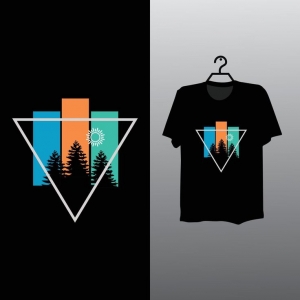In the realm of industrial process control and measurement, accuracy and reliability are paramount, especially when dealing with extreme operating conditions. Low temperature liquid flow meters represent a specialized category of instrumentation designed to perform precisely in challenging environments where conventional flow measurement devices often fail. These sophisticated instruments are engineered to withstand cryogenic temperatures while maintaining exceptional measurement accuracy, making them indispensable across various industrial sectors including chemical processing, liquefied gas handling, pharmaceutical manufacturing, and aerospace applications.
The demand for high-performance low temperature liquid flow meters has grown exponentially as industries continue to push the boundaries of innovation, working with substances like liquid nitrogen, liquid oxygen, liquefied natural gas (LNG), and other cryogenic fluids that operate at temperatures far below zero. Understanding the critical role these instruments play in ensuring operational efficiency, safety, and regulatory compliance is essential for any facility handling low-temperature liquids.
Understanding Cryogenic Flow Measurement Challenges
Operating in low-temperature environments presents unique challenges that standard flow meters simply cannot address. When liquids are cooled to cryogenic temperatures—typically below -150°C (-238°F)—materials behave differently, contracting and becoming brittle. This extreme cold affects not only the wetted components but also the entire measurement system, including seals, gaskets, and electronic components.
Traditional flow meters may experience seal failures, material embrittlement, condensation issues, and signal degradation when exposed to such conditions. High-performance low temperature liquid flow meters are specifically designed with specialized materials such as stainless steel alloys, brass with appropriate temperature ratings, and advanced polymers that maintain their mechanical properties even at extreme cold temperatures. The selection of materials is crucial to prevent thermal shock, ensure dimensional stability, and maintain leak-tight integrity throughout the operating temperature range.
Advanced Technology and Design Features
Modern low temperature liquid flow meters incorporate cutting-edge technology to deliver accurate measurements in harsh conditions. Turbine-style meters, positive displacement meters, Coriolis meters, and magnetic flow meters each offer distinct advantages for cryogenic applications, with selection depending on factors such as fluid properties, flow range, accuracy requirements, and installation constraints.
Turbine flow meters designed for low-temperature service feature precision-machined rotors mounted on specialized bearings that function reliably at cryogenic temperatures. The rotor's rotational speed remains proportional to flow rate, with magnetic or optical sensors detecting rotation without contact, eliminating wear and maintaining long-term accuracy. Advanced signal processing electronics compensate for temperature effects and provide stable output signals.
Positive displacement meters excel in applications requiring high accuracy across wide viscosity ranges. Their mechanical design, featuring precisely fitted rotors or gears, measures discrete volumes of liquid passing through the meter. When constructed with appropriate materials and clearances accounting for thermal contraction, these meters deliver exceptional repeatability and accuracy even with varying temperature conditions.
Coriolis mass flow meters represent the premium solution for critical applications requiring direct mass measurement. These instruments measure mass flow independently of fluid density, temperature, and viscosity changes, making them ideal for custody transfer and precise batching operations involving cryogenic liquids. Their vibrating tube design, when properly insulated and temperature-compensated, provides unmatched accuracy and additional process information including density and temperature.
Critical Applications Across Industries
The petrochemical and natural gas industries rely heavily on high-performance low temperature liquid flow meters for LNG handling, storage, and distribution. Accurate measurement of LNG is essential for custody transfer, where even small measurement errors can translate to significant financial discrepancies. These meters must operate reliably at approximately -162°C (-260°F), the boiling point of methane, while meeting stringent regulatory requirements.
In aerospace and rocket propulsion, liquid oxygen and liquid hydrogen serve as powerful propellants, requiring precise flow measurement for engine control and propellant management. The extreme temperatures—down to -253°C (-423°F) for liquid hydrogen—demand meters specifically engineered for cryogenic service with rapid response times and high accuracy to ensure optimal engine performance and safety.
The industrial gas industry utilizes low temperature flow meters extensively for production, distribution, and consumption monitoring of liquid nitrogen, oxygen, argon, and carbon dioxide. Whether filling dewars, supplying process equipment, or monitoring bulk storage facilities, accurate flow measurement ensures efficient operations, proper inventory management, and safety compliance.
Pharmaceutical and biotechnology applications increasingly depend on cryogenic flow measurement for processes involving ultra-cold preservation, freeze-drying, and biological sample storage. The precise control of cryogenic fluids is critical for maintaining product integrity and meeting regulatory standards in these highly controlled environments.
Performance Specifications and Selection Criteria
Selecting the appropriate low temperature liquid flow meter requires careful consideration of multiple factors. Accuracy requirements vary by application, with custody transfer typically demanding ±0.5% or better, while process monitoring might accept ±1-2%. The operating temperature range must encompass both normal and extreme conditions, with appropriate safety margins.
Flow range is another critical consideration, as meters must accommodate minimum and maximum flow rates while maintaining acceptable accuracy throughout the range. Turndown ratio—the ratio of maximum to minimum measurable flow—should be sufficient to handle process variations without requiring multiple meters or frequent recalibration.
Pressure rating must exceed maximum system pressure with appropriate safety factors, while considering that cryogenic fluids often require high pressures to maintain liquid state. Connection sizes and types should match existing piping infrastructure while minimizing installation complexity and potential leak points.
Installation and Maintenance Considerations
Proper installation of low temperature liquid flow meters is crucial for optimal performance and longevity. Adequate upstream and downstream straight pipe runs ensure fully developed flow profiles, typically requiring 10-20 pipe diameters upstream and 5 pipe diameters downstream, though specific requirements vary by meter type and manufacturer recommendations.
Thermal insulation protects surrounding equipment and personnel from extreme cold while preventing condensation and ice formation that could affect meter operation. Vapor shields or purge systems may be necessary to prevent atmospheric moisture from freezing on external surfaces.
Regular maintenance, though minimal for quality meters, includes periodic verification of accuracy, inspection of seals and connections, and monitoring of diagnostic outputs. Many modern meters feature self-diagnostic capabilities that alert operators to potential issues before they affect measurement accuracy or system operation.
Conclusion
High-performance low temperature liquid flow meters represent a critical investment for industries working with cryogenic fluids. Their specialized design, advanced materials, and sophisticated measurement technology enable accurate, reliable flow measurement under extreme conditions where conventional instruments fail. As industrial processes continue advancing and cryogenic applications expand, these instruments will remain essential for ensuring operational efficiency, safety, and regulatory compliance across diverse sectors. Selecting the right meter for specific applications requires careful evaluation of operating conditions, performance requirements, and long-term reliability, ultimately delivering value through accurate measurement and dependable operation in the most demanding environments.






